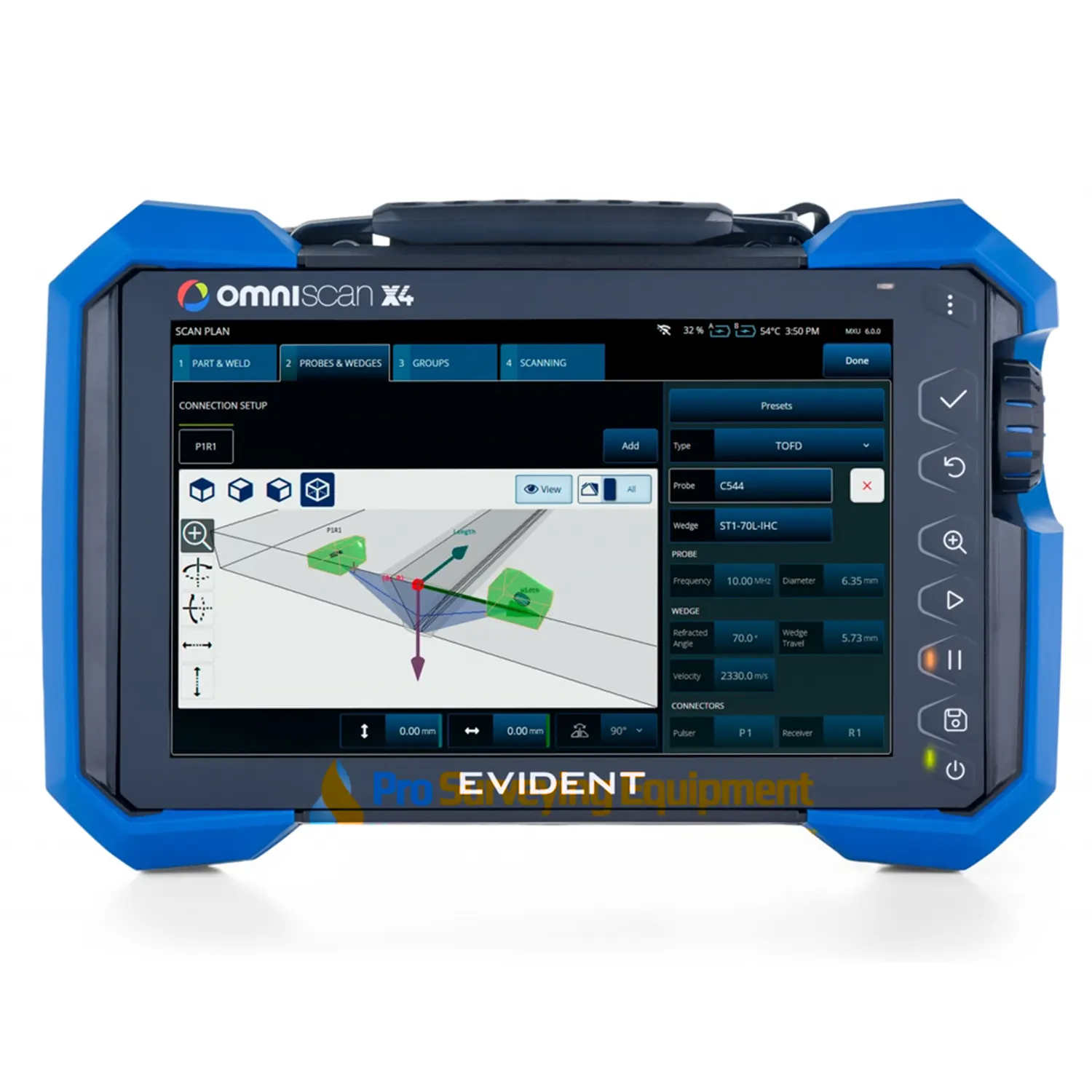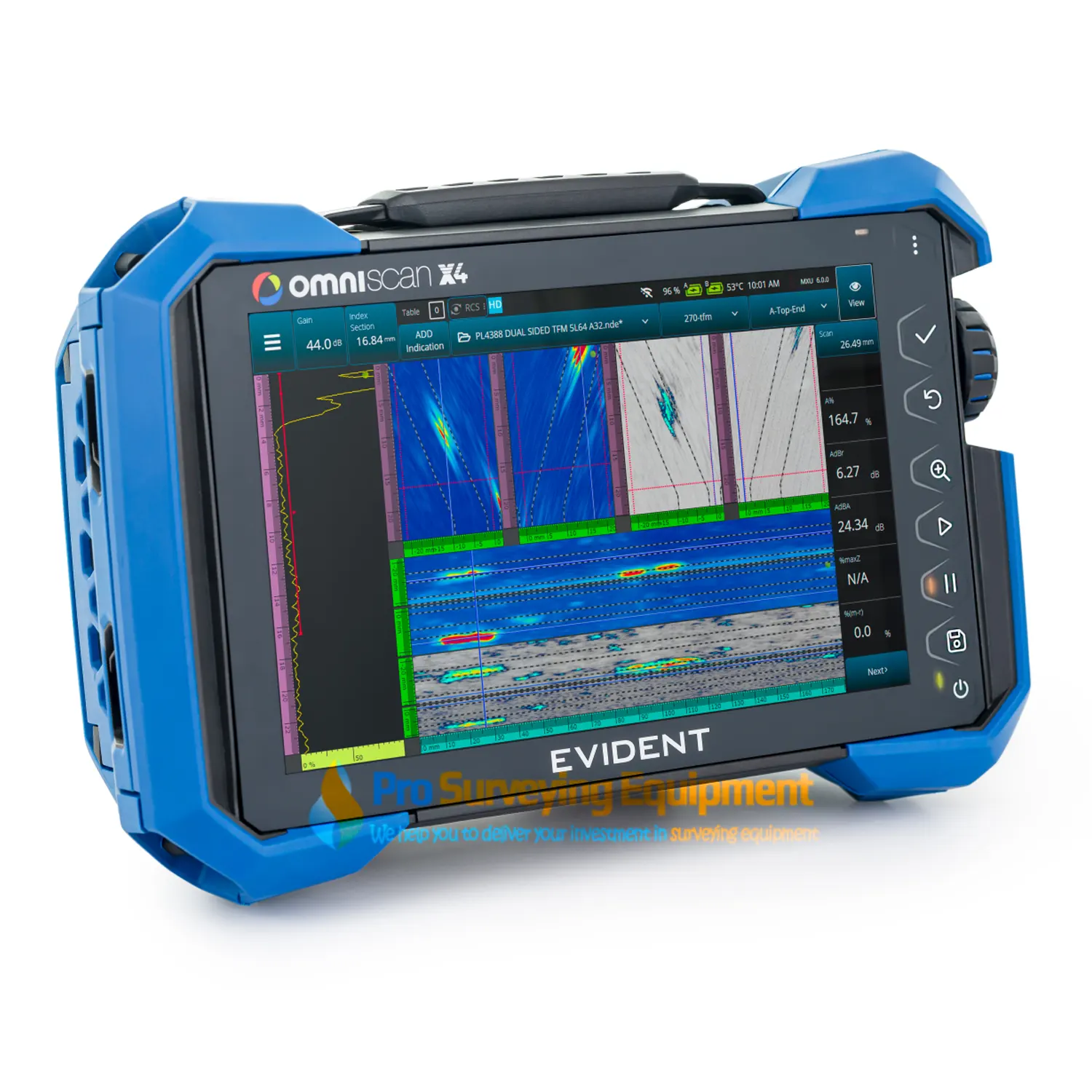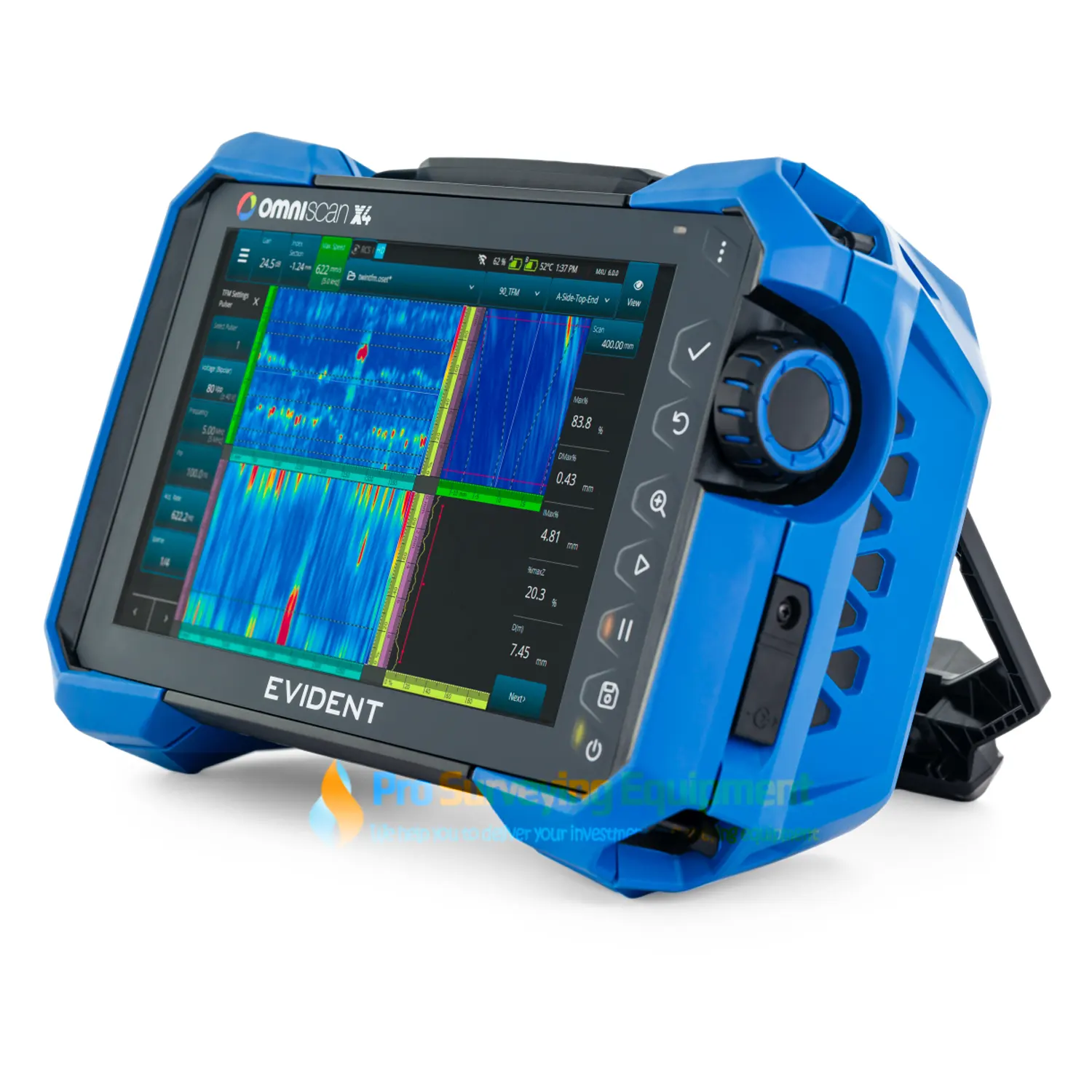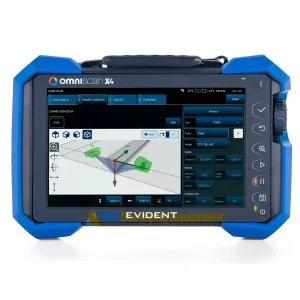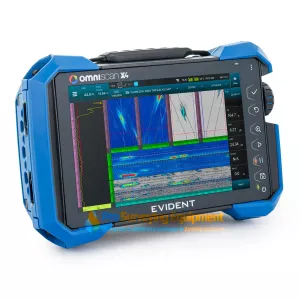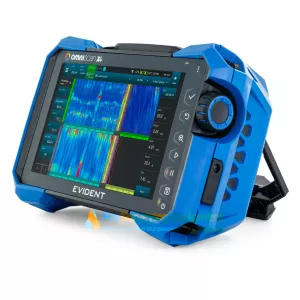Olympus Omniscan X4 Phased Array Flaw Detector
Sale Olympus OmniScan X4 Flaw Detector Phased Array (PAUT), Total Focusing Method (TFM), and Phase Coherence Imaging (PCI) Technologies.
The OmniScanTM X4 multitechnology series is a portable, effective solution that increases test productivity and confidence through speed and versatility. Its advanced phased array capabilities, innovative phase coherence imaging (PCI), and total focusing method (TFM) enable inspectors to detect and interpret challenging flaws, safeguarding asset integrity by identifying damage sooner.
Packages includes;
- OmniScan X4 unit (16:64PR, 16:128PR, 32:128PR, or 64:128PR)
- 2x Lithium-ion batteries (87 Wh each) providing ~5 hours of operation
- Dual-bay smart battery charger (compatible with 100 – 240 VAC)
- AC power adapter and cord
- USB 3.1 cable
- Ethernet cable
- HDMI video-out cable
- SDHC/SDXC card (typically 32 GB pre‑installed)
- Stylus pen for touchscreen
- User manual & quick-start guide
- Soft-sided carrying case and a hard case
- Wi‑Fi/Bluetooth antenna
- 1-year license or access code for onboard MXU 6 software (quarterly updates included thereafter)
- Warranty card (standard 2-year coverage in most regions)
- Calibration plates
- Calibration certificate
Olympus Omniscan X4 Phased Array Flaw Detector | Thickness and Flaw Inspection Solutions
Be Ready for What’s Next: OmniScan X4 Flaw Detector
A portable yet powerful solution, the speed and versatility of the OmniScan X4 multitechnology series boosts your productivity while increasing confidence in your assessments. Exploit its advanced phased array capabilities, efficient total focusing method (TFM), and innovative phase coherence imaging (PCI) to detect and interpret challenging flaws and secure the integrity of your assets by identifying damage earlier.
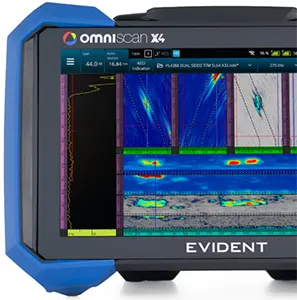
Proven to Perform, Trusted to Deliver
Each OmniScan X4 unit is a complete multitechnology inspection toolbox, enabling you to exploit multiple ultrasonic testing techniques. Leverage its detection and measurement capabilities to accurately identify and evaluate the severity of damage before it becomes critical, protecting welds, components, and assets most susceptible to cracking or corrosion
Images That Speak Volumes
Make Decisions Faster and More Decisively
In addition to phased array ultrasonic testing technology, all OmniScan X4 models come standard with phase coherence imaging (PCI), the total focusing method (TFM), and plane wave imaging (PWI), and their ease of use makes them more accessible for new users. Using multiple tools that provide more information about indications increases your confidence in your assessments.
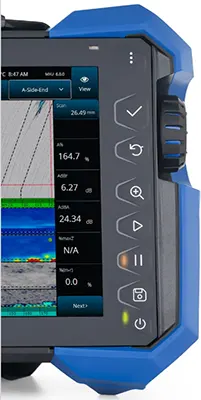 See More Details with Phase Coherence Imaging
See More Details with Phase Coherence Imaging
Identify and interpret challenging flaws such as hook cracks decisively and efficiently using PCI’s capacity to clearly represent hard-to-detect defects. Make accurate assessments about fine flaws such as stress corrosion cracking (SCC) since phase-based PCI is far less susceptible to attenuation from adjacent flaws than amplitude-based techniques. Because tip diffractions of SCC are accentuated by the PCI, you can more easily characterize each crack’s depth and exploit the software gates to quickly isolate the deepest flaws.
Up to 3x Faster TFM
Increase your productivity while exploiting the crisp definition and even focus provided by TFM. Depending on the configuration, the OmniScan X4 series’ TFM is up to three times faster than its predecessor (the OmniScan X3 64 model) when using the sparse firing mode.
Dual-Sided Weld Inspection with Twin TFM and PCI
Give your weld prove up an efficiency boost using twin TFM and PCI. Leverage the individual attributes of PCI and TFM to thoroughly investigate the volume of welds from both sides simultaneously. Using two probes mounted on a scanner such as our AxSEAM™ long-seam scanner, you can produce crisp TFM and PCI results in one pass
Intuitive Application Presets for Improved Efficiency and Consistency
Speed up your setup and improve the consistency of your results using the OmniScan X4 application presets. Choose from among our presets for common corrosion and flaw detection applications using our HydroFORM, FlexoFORM, and RollerFORM scanners. Each option provides preprogrammed parameters that you can edit as desired. Even new users can produce and reproduce optimal setups for PA and PCI inspections in minutes.
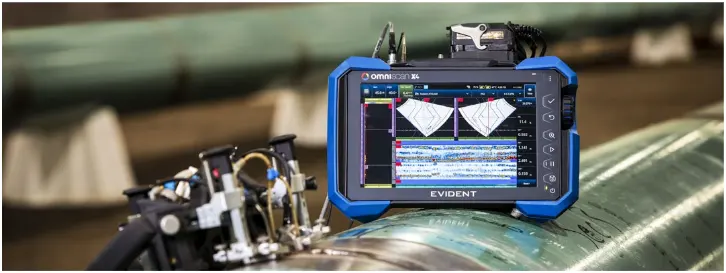
Accelerate B-Scan Screening Exponentially
Easily distinguish suspected flaws from geometry echoes using our unique merged B-scan. This data view combines all B-scans into one, increasing the efficiency of B-scan screening exponentially. Optimized B-scan layouts, including the B-S-A single group and A-B-S multigroup, further improve your ability to clearly identify suspect indications.
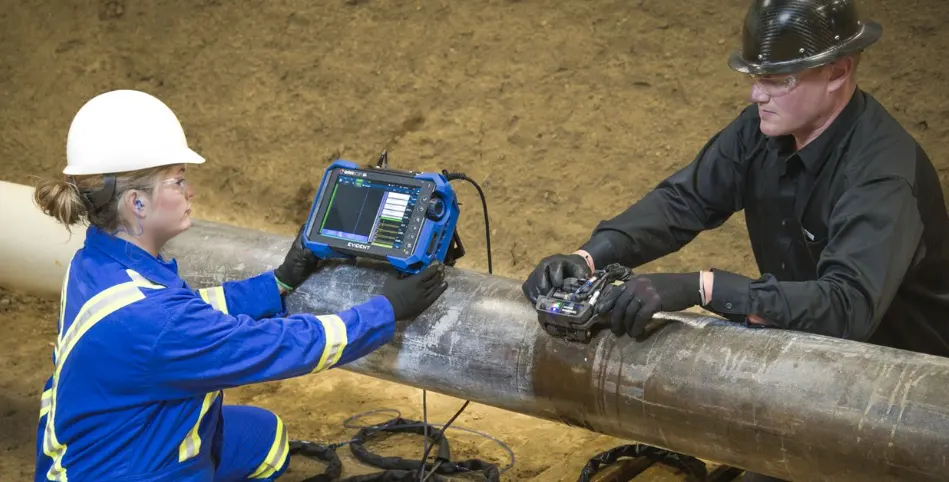
Assess with Certainty Using PCI
Eliminate doubt through phase coherence imaging’s capacity to detect and accentuate historically difficult-to-detect flaws, including hook cracks and stress corrosion cracking (SCC). Use PCI to clearly distinguish individual flaws in colonies of fine cracks and characterize them with certainty.
Gain Instant Insights and Eliminate Inefficency
Twice the Confidence with Twin TFM and PCI
Exploit the individual attributes of PCI and TFM to thoroughly investigate the volume of welds from both sides simultaneously. Use two probes to scan the weld in one pass, displaying TFM and PCI results to compare, measure, and confirm your characterization of indications with efficiency and precision.
Engineered for Speed and Simplicity
Performing phased array, TOFD, TFM, and PCI is straightforward and intuitive on the OmniScan X4 series. Inspectors of any experience level can exploit these techniques with increased efficiency and more confidence utilizing the simple step-by-step scan plan and application presets.
Ease Complex Configurations
The OmniScan X4 scan plan’s intuitive step-by-step 3D graphics ease your inspection setups, from the most basic to the most complex.
When setting up your raster scan plan, the scan axes can be customed named and you can create a datum reference point relative to the asset. These real-world references as well as the true orientation correction, greatly ease the creation of an intuitive schematic representation of the inspection data for your report.
Choose the Right Model for Your Application
Each model of the OmniScan X4 series has the capability to drive probes with a certain number of elements, offering varying focusing capabilities for different materials and thicknesses. Here is an overview of the types of applications that the four models are most proficient at performing. Contact us or your Evident representative for more details.
| 16:64PR Excels at the following applications:
|
16:128PR Excellent mid-range model for:
|
32:128PR Enables high-productivity weld inspection including coarse-grained materials:
|
64:128PR Higher-productivity weld inspection in thicker, coarse-grained materials:
|
Specifications are listed for all models unless stated otherwise |
||||||||||||||||||||||||||||||||||||||||
General and Enclosure
|
||||||||||||||||||||||||||||||||||||||||
Inputs and Outputs
|
||||||||||||||||||||||||||||||||||||||||
General Ultrasonic Specifications
|
||||||||||||||||||||||||||||||||||||||||
Acoustic Specifications
|
||||||||||||||||||||||||||||||||||||||||
PAUT Specifications
|
||||||||||||||||||||||||||||||||||||||||
FMC / TFM / PCI / PWI Specifications
|
||||||||||||||||||||||||||||||||||||||||
